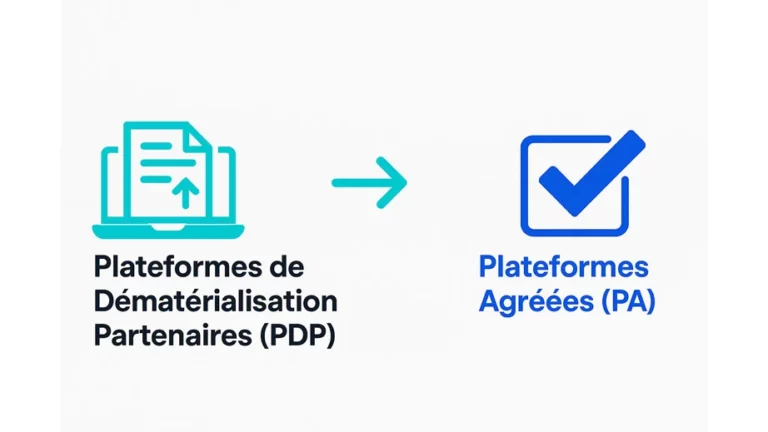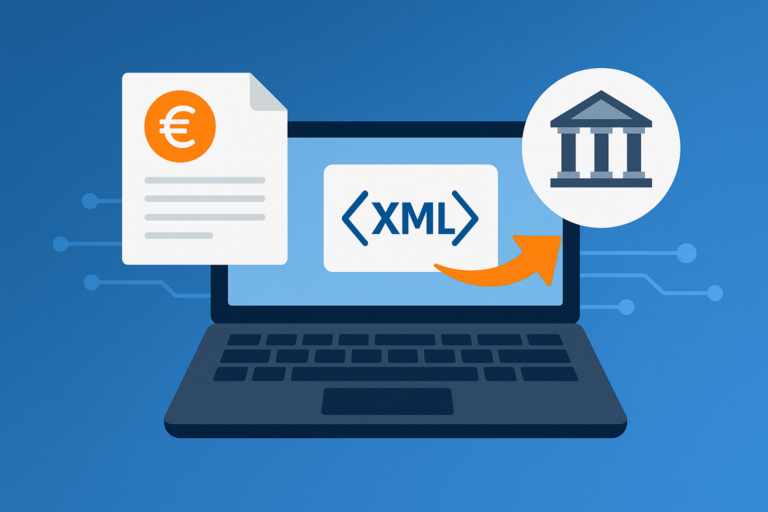Invoice management is a central pillar of any business, but it can quickly become a headache if not optimised.
quickly become a headache if it’s not optimised. Late payments, data entry errors, lack of visibility..,
lack of visibility… These problems are commonplace without a well-defined
circuit. So how do you transform this often laborious process into a smooth
and efficient workflow ? That’s what we’re going to explore.
Why an Invoice Validation Circuit is Essential
An invoice validation circuit is not just a luxury, it is a necessity for several reasons:
Optimised Supplier Relationships: Faster, more accurate payments build trust and improve your relationships with your suppliers.
Reducing errors: By involving several levels of verification, you can drastically reduce the risk of billing errors, duplicate payments or inappropriate approvals.
Enhanced budgetary control: Each invoice is examined and approved by the appropriate people, ensuring that expenditure is in line with the allocated budget.
Significant time savings: No more endless back and forth of physical documents or scattered emails. A structured workflow speeds up the approval process.
Transparency and traceability: Every stage of the validation process is recorded, providing complete visibility of the status of each invoice and impeccable traceability in the event of an audit.
The Key Steps in an Effective Validation Workflow
Setting up a robust validation circuit involves a number of crucial steps:
1. Defining roles and responsibilities
Who validates what? This is the first question to ask. Clearly identify the people involved in the process:
- Receiving the invoice: Who receives it and carries out the initial check?
- Verification and reconciliation: Who ensures that the invoice corresponds to the purchase order or delivery note?
- Line management approval: Which managers or heads of department need to approve expenditure amounts or categories?
- Final approval and payment: Who is responsible for final approval and triggering payment?
2. Establish the Validation Rules
Workflow must be governed by clear rules. For example:
- Amount thresholds: An invoice for €100 does not require the same approval chain as an invoice for €10,000.
- Types of expenditure: Marketing expenditure may be approved by the head of the marketing department, while IT expenditure is the responsibility of the CIO.
- Specific projects: Some invoices may require the approval of the relevant project manager.
3. Choosing the right technological solution
This is where technology comes into play to streamline your workflow. There are a number of options available to you, from electronic document management (EDM) tools to integrated accounting software with approval modules. Look for solutions that offer :
- Automation: The ability to automatically trigger workflow steps following an action (e.g. receipt of an invoice).
- Customisation: The ability to adapt the validation circuit to your specific rules.
- Alerts and reminders: Notifications for approvers and reminders when deadlines are exceeded.
- Dashboards and reporting: an overview of invoice status and analysis of bottlenecks.
- Integration: Compatibility with your existing systems (CRM, ERP, etc.).
4. Test and adjust
Once you have set up your validation circuit, don’t skip the testing stage. Involve key users to identify sticking points and possible improvements. A workflow needs to be dynamic and adaptable to changes in your business.
How Azopio Facilitates the Implementation of Your Invoice Validation Circuit
Among the technological solutions available, Azopio is an ideal ally for dematerialising and optimising your invoice validation circuit. Here’s how Azopio can help you:
- Intelligent capture and recognition: Azopio enables you to centralise all your invoices (email, scan, import) and uses artificial intelligence to automatically extract key data (supplier, amount, date, etc.). This eliminates manual data entry and the associated errors, laying the foundations for a frictionless workflow.
- Customisable Approval Workflows: At the heart of Azopio, you can define and automate customised approval circuits. Whether it’s a simple approval or a complex workflow with several conditional stages (for example, “if the amount > X€, then approval by the N+1 and the financial director”), Azopio adapts to your business rules.
- Intelligent allocation rules: You can set up rules to automatically direct invoices to the right approvers based on predefined criteria: supplier, amount, cost centre, project, or any other dimension relevant to your business. This ensures that the invoice goes straight to the right person.
- Real-time alerts and notifications: approvers receive instant notifications when an invoice requires approval, by email or via the application. Reminders can be sent to avoid delays and keep the workflow running smoothly.
- Simplified access and validation: Approvers can view invoices and validate them (or reject them with a reason) from anywhere, via an intuitive web interface. This flexibility speeds up the approval process considerably.
- Complete traceability and reliable audit trail: every action (receipt, extraction, validation, rejection, payment) is time-stamped and recorded. Azopio provides a detailed history for each invoice, offering full traceability and facilitating internal or external audits.
- Integration with Your Ecosystem: Azopio integrates easily with many accounting and ERP software packages on the market (Sage, Cegid, QuickBooks, ACD, Wavesoft, etc.), enabling validated data to be exported ready for accounting. This integration ensures continuity of information and avoids double entries.
By taking advantage of solutions like Azopio, companies can not only dematerialise their invoices, but above all establish a validation circuit that reduces processing times, minimises errors and frees up time for higher value-added tasks.
In conclusion, setting up an efficient invoice validation circuit is an investment that quickly pays off. By transforming an often chaotic process into a structured, automated workflow, you can increase productivity, reduce errors, strengthen your financial control and improve relations with your partners. Don’t wait any longer to optimise your invoice management and give your business a new lease of life!




